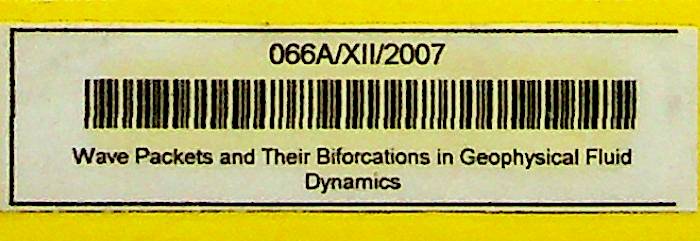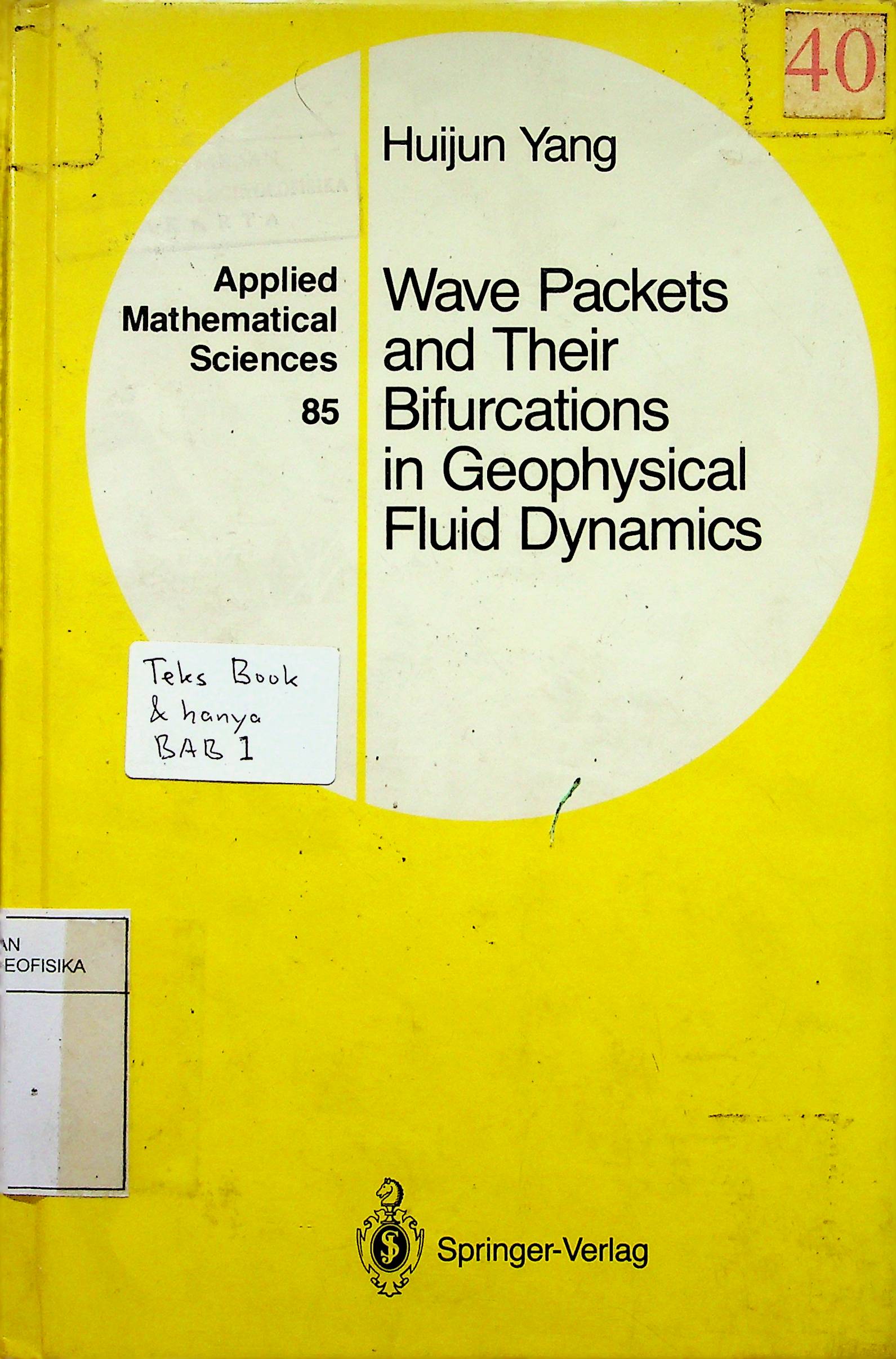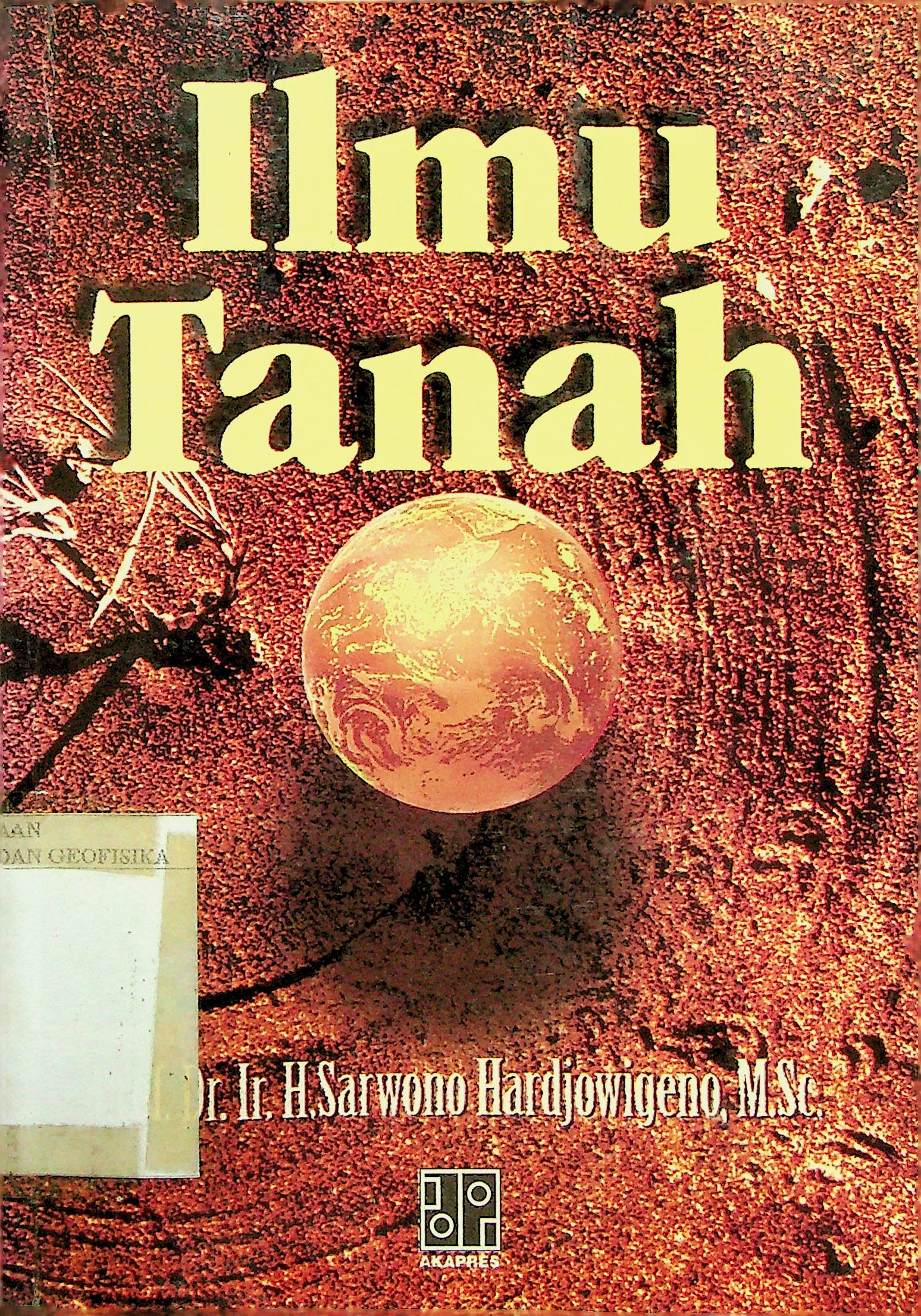Chapters 3 to 6 are devoted to discussions of the evolution of the wave packet in barotropic basic flows, with the emphasis on the structure and structural change of the wave packet. Chapter 3 introduces the inviscid shallow-water model and potential vorticity equation. Equations governing the evolution of the Rossby wave packet are derived. Integral properties of a wave packet are discussed, including extensions of the Rayleigh theorem and the Fjortoft theorem. The effects of the role of the earth’s rotation, basic flow, and topography upon the structure and structural change of a wave packet are covered. Chapter 4 introduces theconcept of the wave packet’s structural vacillation (or oscillation) and considers its relevance to vacillations observed ingeophysical fluids. The (5-effect is also discussed. Chapters 5 and 6 consider the bifurcation behavior of wave packets by the useof bifurcation diagrams and phase space diagrams. The dynamic behavior of the structure of a wave packet is discussed. The dynamic system consists of two highly nonlinear equations, (5.26) and (5.27). Topics such as equilibrium state, stability, topological structure near an equilibrium state, primary bifurcation, secondary bifurcation, cascading bifurcation, and structural stability are also discussed, as required.Chapter 7 extends earlier studies in barotropic basic flows to the case of three-dimensional wave packets in stratified baroclinic basic flows. Most of the results in this chapter have not been published before. The structures of developing and decaying wave packets and bifurcation properties are investigated in such cases as the stably stratified and unstably stratified purely barotropic basic flows, the purely baroclinic basic flows, and the barotropic and baroclinic basic flows. The dynamic system governing the structural change of a wave packet consists of three highly nonlinear equations (7.92) to (7.94). The bifurcation properties in both stably stratified and unstably stratified basic flows are investigated. The implications of their results in geophysical fluids are discussed.The last chapter deals with the theory of wave packet propagation associated with teleconnections observed in geophysical fluids. The theory on a sphere, developed by Hoskins and Karoly, is also discussed. In contrast to Chapters 3 to 7, it emphasizes the propagation property of a wave packet rather than the structures and structural changes. Hence, the discussions in Chapters 3 to 7 and those in Chapter 8 can support each other under the main frame developed in Chapters 1 and 2. The entire content of the manuscript, therefore, is consistent and carefully organized.I would like to thank the many people who helped in my study and the present work. I especially thank those people who are in the Geophysical Fluid Dynamics Institute of Florida State University, Peking University, the Institute of Atmospheric Physics of Academia Sinica, and the Chegdu Institute of Meteorology. I am very grateful to Professor Dasheng Yang and Professor Ronghui Huang for their continuing encouragement and for their review of the manuscript. Dr. Arthur J. Rosenthal read the manuscript and offered very helpful suggestions. Dr. Xiaolei Zou read Chapter 7 and Ahelped me in the final draft. To them I am sincerely grateful. Dr. Phillips G. Drazin’s suggestions were also very helpful. I am indebted to Dr. RichardL. Pfeffer, Director of the Geophysical Fluid Dynamics Institute, who has given me continuingencouragement and support during the course of the present work. My sincere thanks are also due to Drs. Lious N. Howard, Ruby Krishnamurti, and Henyi Weng for their encouragement and help. During the writing, I also received help from Drs. Brian J. Hoskins, Rolando R. Garcia, and David J. Karoly.I am also indebted to Mr. Bernd Grossmann, Vice-President of Springer-Verlag Heidelberg, Inc., Mr. Peng Songjian, ChiefEditorof Peking University Press, Ms. Qiu Shuqing, Director of Mathematics and Physics of Peking University Press, as well as Ms. Wendy Rice and Ms. Francine Sikorski at Springer-Verlag New York, Inc., for their splendid cooperation.Finally, I am particularly appreciative of my wife, Dr. Liwen Tao, for her considerable patience and help. I also owe thanks to my little daughter, Linda Fei Yang.This work was supported in part by the Geophysical Fluid Dynamics of Florida State University. I gratefully acknowledge this support. I also thank the Florida State University Chapter of The Society of Sigma Xi and Peking University for their awards, given for my research papers on the subject. This is Contribution Number 285 of the Geophysical Fluid
5
Applied Mathematical Sciences
F.jhon, J.E. Marsden & L. Sirovich
Penerbit :
Springer-Verlag
Tahun :
1990
Buku Text
-
No Scan111
-
No Klasifikasi550
-
ISBN
-
ISSN
-
No Registrasi066A/XII/2007
-
Lokasi Terbit
-
Jumlah Hal22
-
Label550 Yan w
-
Versi DigitalTIDAK
-
Versi FisikTIDAK
-
Lokasi Rak Buku Fisik//
-
Jumlah Exemplar Fisik Tersedia-






